Key takeaways
- A musician portfolio should reflect personal artistry, connecting emotionally with the audience through both music and visual elements.
- Engaging the audience enhances performances, fostering community, loyalty, and creating shared experiences.
- Authenticity, strategic body language, and interactive questions help forge a deeper connection and make performances more dynamic.
- Effective stage presence relies on confidence, well-timed pauses, and appropriate lighting to enhance the emotional impact of the performance.
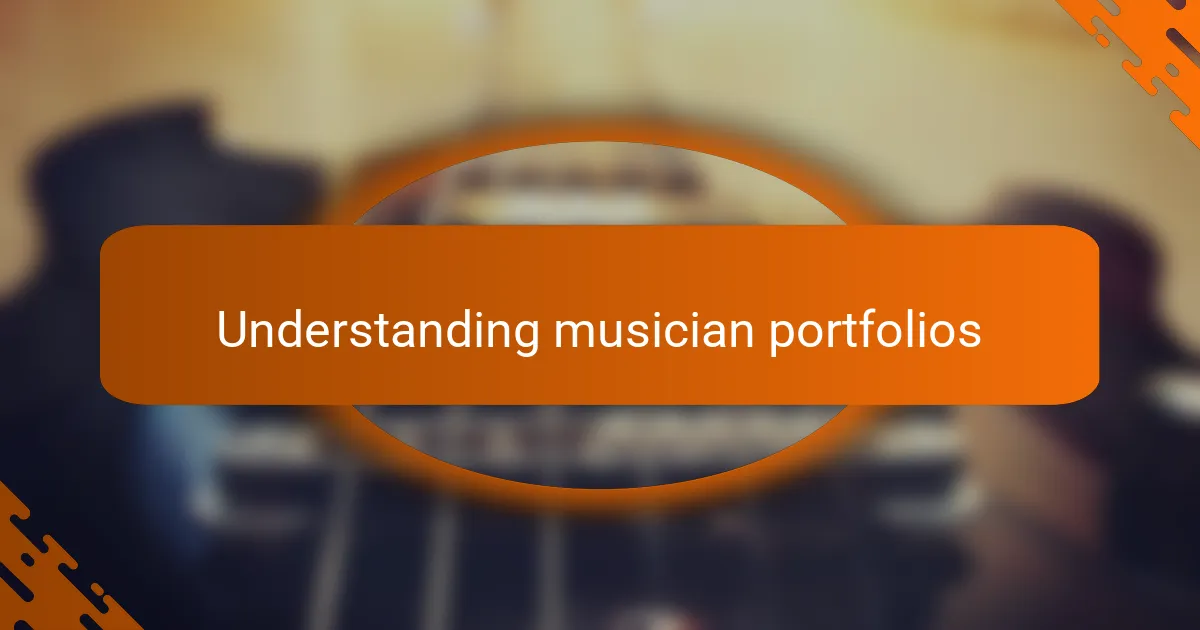
Understanding musician portfolios
A musician portfolio is more than just a collection of tracks; it’s a personal reflection of your artistry. I remember when I first assembled mine, feeling a mix of excitement and vulnerability. It struck me that each song represented not just my sound, but also my journey and emotions.
When developing your portfolio, think about what connects you with your audience. Have you ever performed a song that brought an unexpected reaction? Those moments can inform your selection. I often find myself choosing tracks that evoke strong feelings, making it easier for listeners to resonate with my experiences.
Visual elements also play a crucial role in a musician portfolio. I once decided to include behind-the-scenes photos from my performances. This not only showcased my personality but also created a more intimate connection with my audience. How do you want your listeners to perceive you? Remember, a strong portfolio tells your story just as much as your music does.
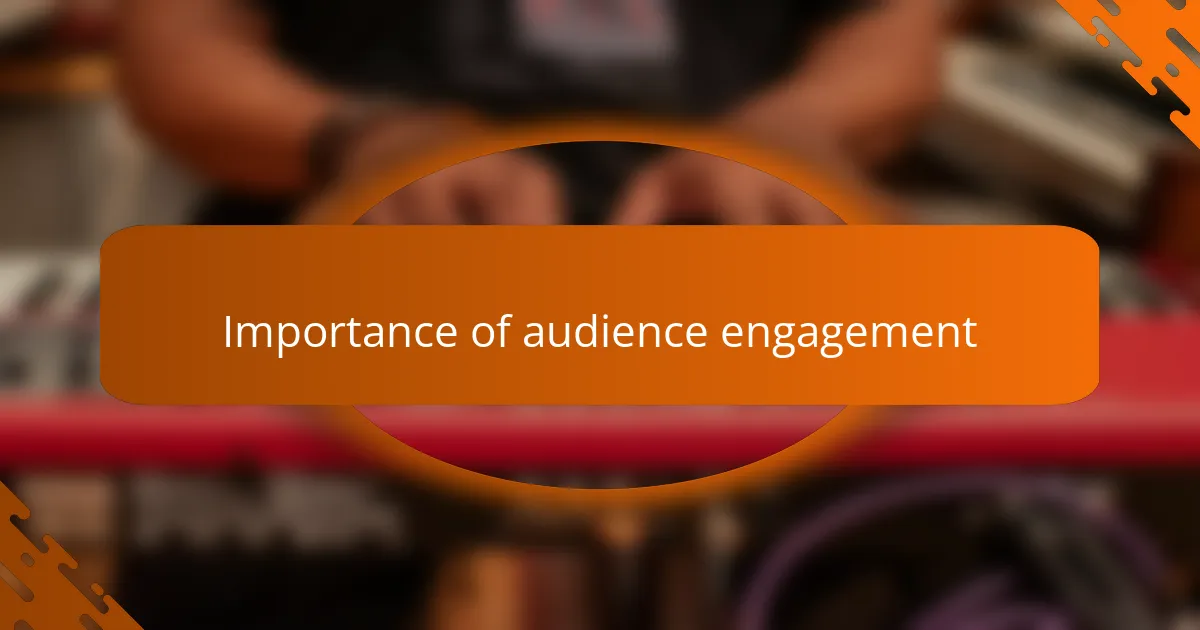
Importance of audience engagement
Audience engagement is crucial for any musician. I still remember my first live show—nervous, a bit shaky, but when I connected with the crowd, everything changed. Their energy fueled my performance, and the synergy we created made it not just a concert but a shared experience.
Engaging with the audience does more than enhance the performance; it builds a sense of community and loyalty. I’ve found that simple gestures, like eye contact or asking for a sing-along, can transform the vibe in the room. Here’s what I believe makes audience engagement so important:
- It fosters a deeper emotional connection.
- It enhances the overall atmosphere of the performance.
- It encourages audience participation, making them feel valued.
- It can lead to repeat attendance at future events.
- It transforms a performance from a one-way show to a shared journey.

Strategies for connecting with audiences
When it comes to connecting with audiences on stage, I’ve discovered that authenticity goes a long way. I remember a gig where I shared the story behind my song, which resonated deeply with the crowd. Instead of just performing, I engaged them by inviting their reactions, creating a shared experience that felt more intimate.
Another effective strategy is to use body language strategically. I once noticed how a simple smile and open stance invited the audience to engage with my performance. This non-verbal communication can transform a one-way performance into a dynamic interaction, making the audience feel like a part of the show.
Finally, I’ve found that asking questions during a performance prompts the audience to participate. For example, I would ask them about their favorite moments in my songs. This creates a dialogue, and I often see faces light up with excitement as they respond—making the concert feel more like a collective celebration.
| Strategy | Description |
|---|---|
| Authenticity | Sharing personal stories behind songs for a deeper connection. |
| Body Language | Using non-verbal cues to invite audience engagement. |
| Interactive Questions | Encouraging audience participation to create a shared experience. |
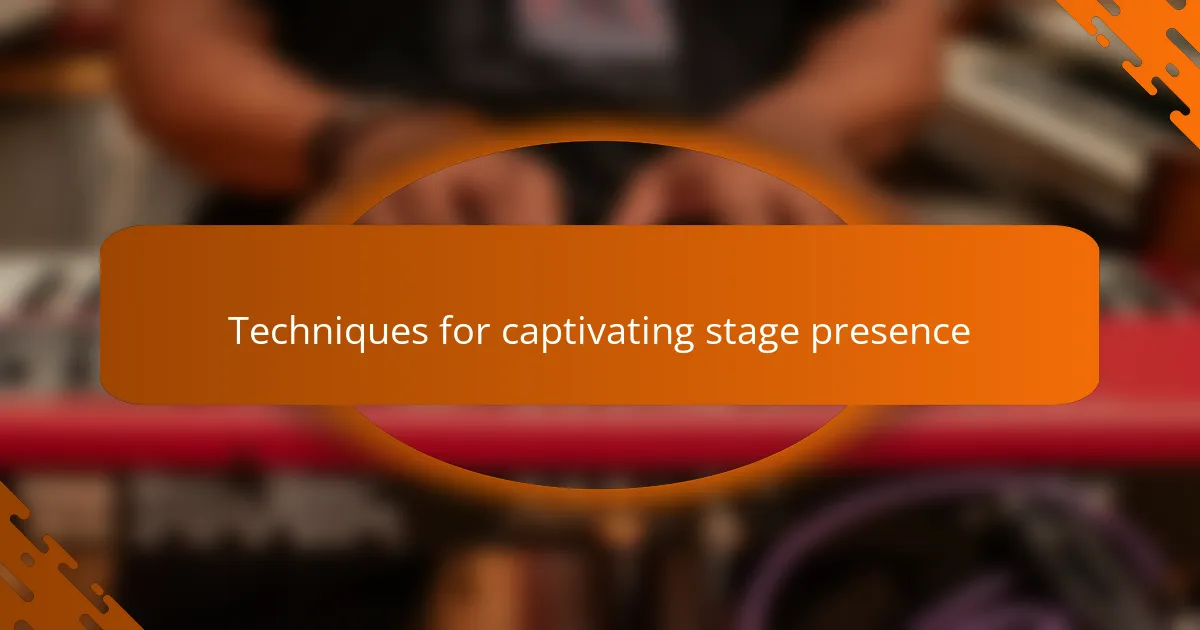
Techniques for captivating stage presence
Captivating stage presence starts with owning your space. I’ve felt the difference just by adjusting my posture—standing tall and confident instantly boosts my energy and presence. Have you ever noticed how a performer who seems self-assured can draw you in? That’s the power of commanding your area; it invites the audience to take interest and engage.
One technique I’ve found particularly effective is the use of well-timed pauses. During my performances, a brief silence before a powerful lyric has a profound effect. It allows the audience to hang on to the moment, creating anticipation. I often see them lean in closer, as if they’re collectively holding their breath. Isn’t it fascinating how a simple pause can alter the entire atmosphere?
Lighting can also make a significant impact on stage presence. I once performed under dim blue lights, creating an intimate vibe that perfectly complemented my slower songs. It transformed the entire experience, making each note feel more personal. How do you want your audience to feel? Choosing the right lighting can help communicate your artistic intentions and embrace the emotions you wish to convey.
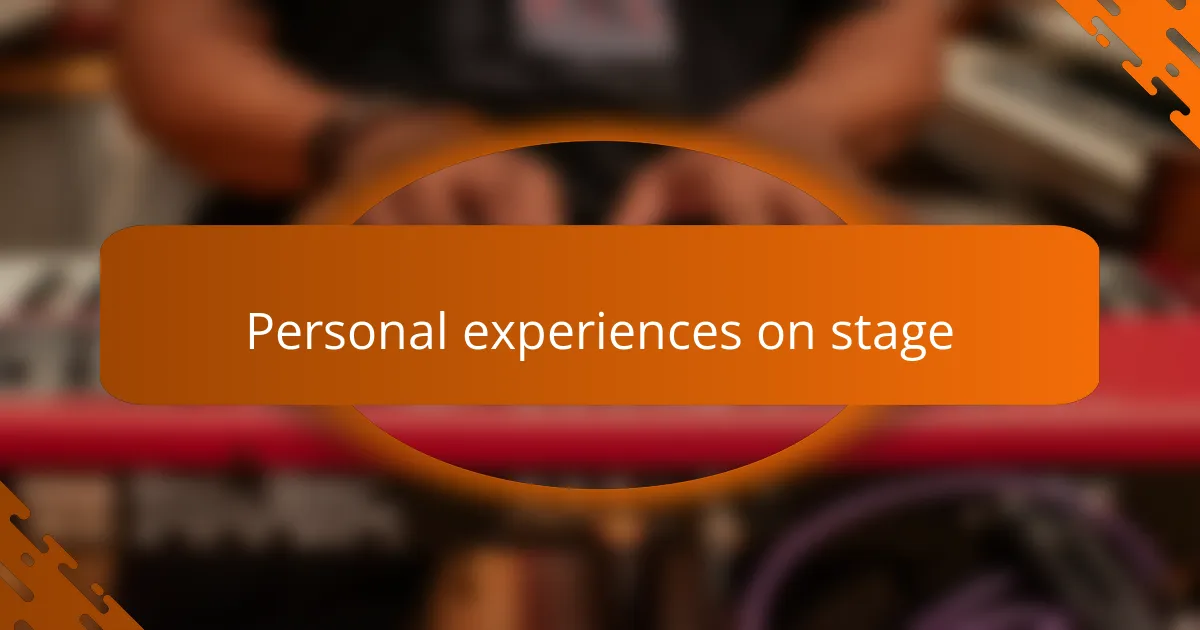
Personal experiences on stage
Experiencing life on stage is unlike anything else. I vividly remember a particular performance where I opened up about my struggles—the audience quietly leaned in as I shared my truth. Their nods and smiles as I sang felt like a warm embrace, transforming the entire atmosphere into something deeply connected. Have you ever felt that electric energy when you truly connect with your listeners? It’s a reminder that vulnerability can create profound bonds.
During one unforgettable show, I made a spontaneous decision to invite a few audience members onto the stage for a duet. That moment of shared laughter and joy turned a simple performance into a beautiful celebration of music and togetherness. It’s amazing how such unscripted interactions can elevate an experience beyond the music itself, making everyone feel valued and included.
I also learned the importance of reading the room. There were nights when the audience was quiet and reflective, and I knew to play more soulful tracks. Other times, they were ready to dance, and I shifted gears accordingly. This adaptability not only enhances the performance but also demonstrates a genuine investment in the audience’s experience. How often do you find yourself attuned to the energy of those around you? Being present brings a unique magic to each show.
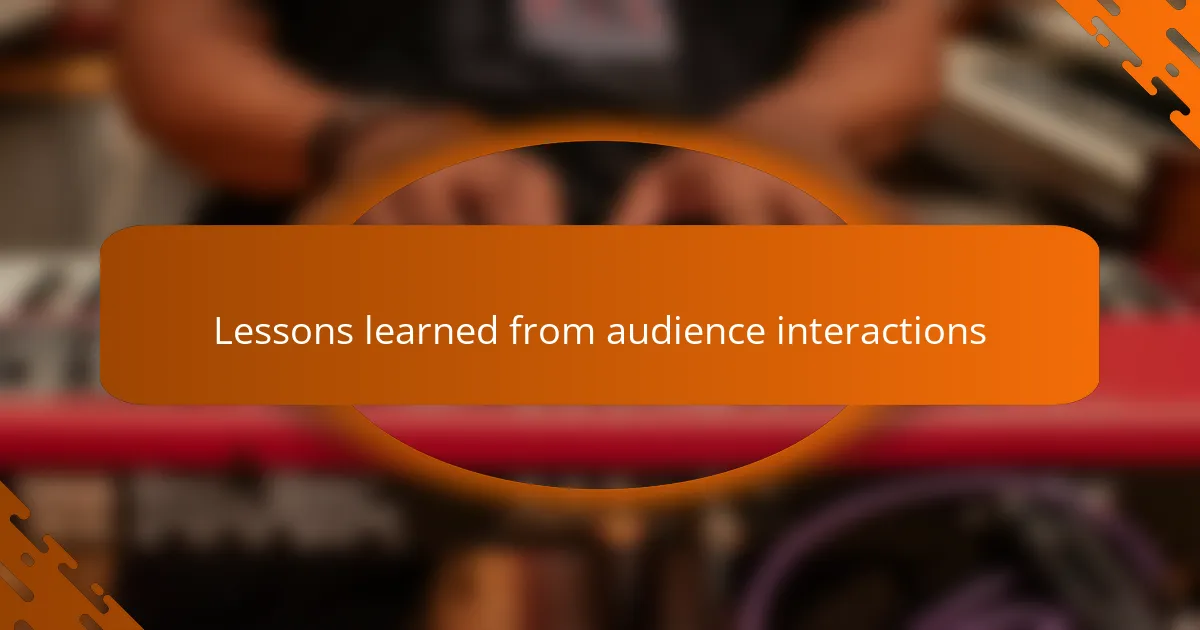
Lessons learned from audience interactions
When I first stepped on stage, the energy of the audience was almost palpable, but I quickly realized that true engagement was more than just playing my music. It was about making eye contact, sharing personal stories, and reading the room. There was a moment during a performance when I shared a heartfelt story about the inspiration behind one of my songs, and the silence that followed was deeper than I’d ever experienced. This emotional connection created a bond with my audience that made the rest of the set feel electric.
I’ve learned several invaluable lessons from my interactions with audiences. These experiences have shaped how I perform and connect:
- Be present: Focus on the audience’s reactions to tailor the performance in real time.
- Share personal moments: It fosters a deeper emotional connection and makes the audience feel included.
- Encourage participation: Inviting audience members to sing along or clap can create a communal atmosphere.
- Read the room: Gauge the mood and adjust accordingly, whether the energy is high or more reflective.
- Follow their lead: If they are engaged, lean into that moment; if not, find a way to uplift their spirits.